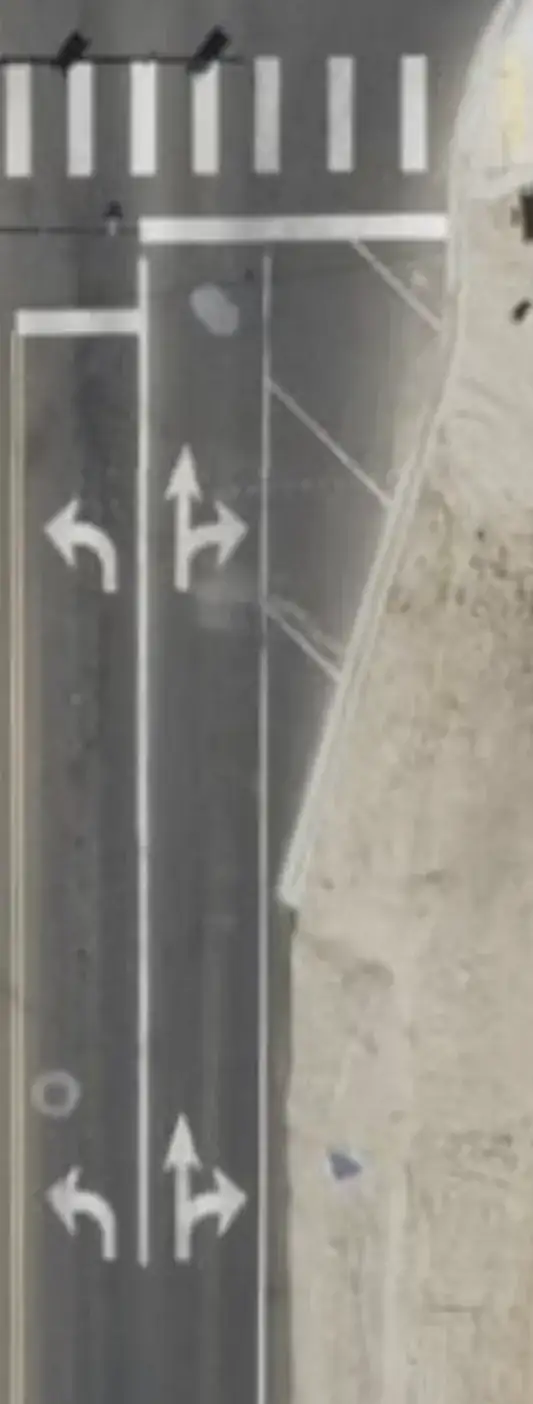There's a certain intersection in Idaho, USA that's causing confusion for a lot of drivers. As you can see in the photo, the pavement widens near the intersection, as if there should be a right turn lane. But the widening area is marked with diagonal lines. The turn arrows show that the same lane should be used for traffic going straight and turning right. The only lane usage indicators are the pavement markings and traffic lights. There is no additional signage.
Many drivers turn right from the area with the diagonal stripes, and many others turn right from the lane with the right and straight arrows. There's no clear consensus among drivers on how to make right turns here.
I asked the highway department about it, and they said "...even though this area is not specifically striped as a right turn lane (there isn’t enough room to physically stripe a dedicated area for right turning vehicles), drivers who use it as such are acting lawfully." They cited Idaho Code 49-644, which says, "Both the approach for a right turn and the right turn shall be made as close as practicable to the right-hand curb or edge of the roadway."
Their answer could be correct, but it doesn't feel right to me. I was taught to stay off diagonal lines, and to turn where the arrows are. I searched as many places as I could think of, including titles 40 and 49 of the Idaho code, and I couldn't find the specific meanings of turn arrows or diagonal stripes. What is the correct way to turn right at this intersection, and why?
